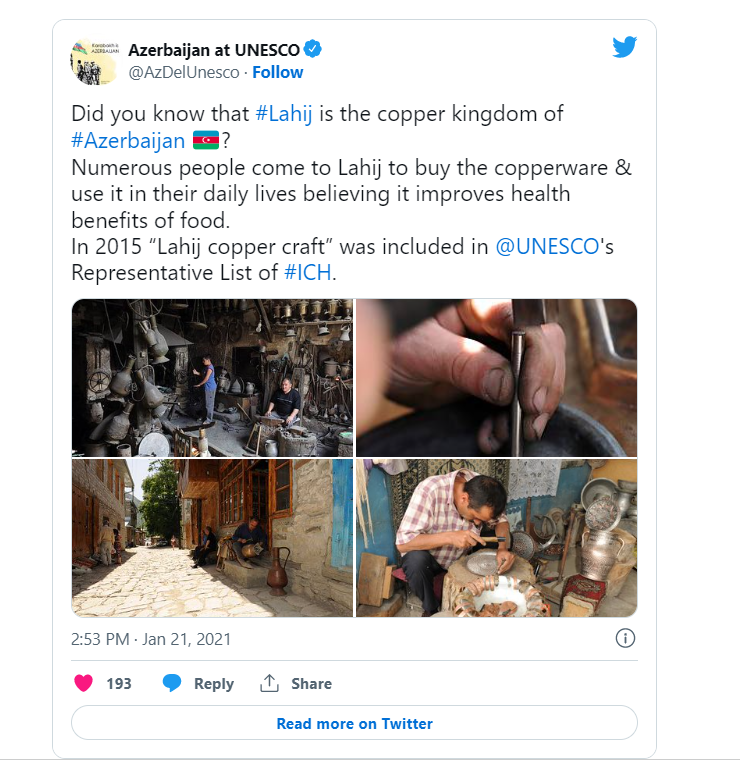In Lahij, the highly skilled craft of making copperware is still practiced

Lahij has a long history of being renowned as an artist community. There, people do crafts like weaving carpets and making leather. However, Lahij became well-known because of its coppersmiths. This tiny village’s emblem is highly decorative copperware made on-site.
Coppersmith Kebleyi Aliyev resides and works in Lahij. He claims that his workshop has been around for 300 years. It was first used in 1725 and is still in use today. All of his forebears, including his great grandfathers, uncles, and offspring, have worked at his workshop. At the age of 50, Kebleyi, who has worked there since he was five years old, adds that his children will represent the eighth generation of his family to do so.

A traditional craft
One of the earliest kinds of metalwork is the production of copper. Since humanity first discovered how to take copper from the ground thousands of years ago, they have been shaping and embellishing copperware.
The techniques and procedures used in this craft haven’t altered all that much over time. Local coppersmiths still make use of age-old implements like chisels and sledgehammers. It’s laborious work that calls for endurance, fortitude, and patience.
Haji Aliyev is an additional coppersmith. After Kebleyi has fashioned the dishes from raw copper and covered them with a coating of tin, he takes care of the decoration and embellishment of the tableware. Because every dish is different, he argues, “you can’t keep applying the same pattern to every dish.”
His sources of inspiration are the actual meals. He simply use a chisel as a tool. He imagines the drawing in his head before he begins inscribing; he doesn’t even trace or outline it before he starts.
The Louvre in Paris and other well-known museums throughout the world currently display Lahij-made copper tableware, which is also highly prized in the region. They are aware that copper art in Lahij stretches back many centuries, as stated by Kamal Aliyev, the director of the Lahij State Historical and Cultural Reserve. There is proof that dinnerware was even produced there as early as the eleventh century. “Apart from that, in the various regions of Azerbaijan, archaeologists have discovered copper coins that were manufactured in Lahij during the Middle Ages”, he adds.
The UNESCO Representative List of the Intangible Cultural Heritage of Humanity included copper workmanship in 2015.





Leave a Reply
You must be logged in to post a comment.